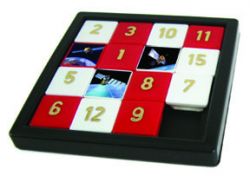
By measuring the elapsed time between the transmission and reception of GNSS signals, navigation receivers calculate the pseudorange to each satellite and use this information to calculate their position on Earth. However, receivers not only have to calculate the user’s position in a 3D environment; they also have to cope with an unknown time bias between the receiver and the GNSS system.
By measuring the elapsed time between the transmission and reception of GNSS signals, navigation receivers calculate the pseudorange to each satellite and use this information to calculate their position on Earth. However, receivers not only have to calculate the user’s position in a 3D environment; they also have to cope with an unknown time bias between the receiver and the GNSS system.
Therefore, to precisely estimate a user’s position, receivers need to solve for four unknowns, which requires at least four pseudorange measurements between the receiver and the satellites. This means that a minimum of four satellites needs to be available to accurately estimate a user’s position.
Because the positioning accuracy will improve as more satellites become available (better geometry measured with the well-known dilution of precision or DOP parameters), we should expect that a combination of Galileo and GPS will provide better performance than those of both systems separately. In the future, therefore, most GNSS receivers will calculate the navigation solution using measurements from GPS and Galileo together.
However, the European navigation system Galileo will not use the same time reference as GPS and, thus, a time difference arises — the GPS-Galileo Time Offset (GGTO). The navigation solution calculated by receivers using signals from both navigation systems will consequently contain a supplementary error if the GGTO is not accounted for. Users wanting to use measurements from both systems need to cope with this time offset if they do not want to degrade the final navigation solution.
This article discusses three different approaches to solve the problems faced when using both navigation systems together, proposed in the work by A. Moudrak et alia cited in the Additional Resources section near the end of this article. These three approaches are the following: GGTO determination at user level, at the system level, and a combination of these two methods.
We have extended the previous research into the methods of GGTO determination by examining the differences among the three proposed solutions with the aid of a software simulation tool in representative environments, including a 3D model of the city of Toulouse, France. Our research also took into account not merely the directly received signals from the satellites, but also signals reflected from the surrounding structures.
(For the rest of this story, please download the complete article using the link above.)





